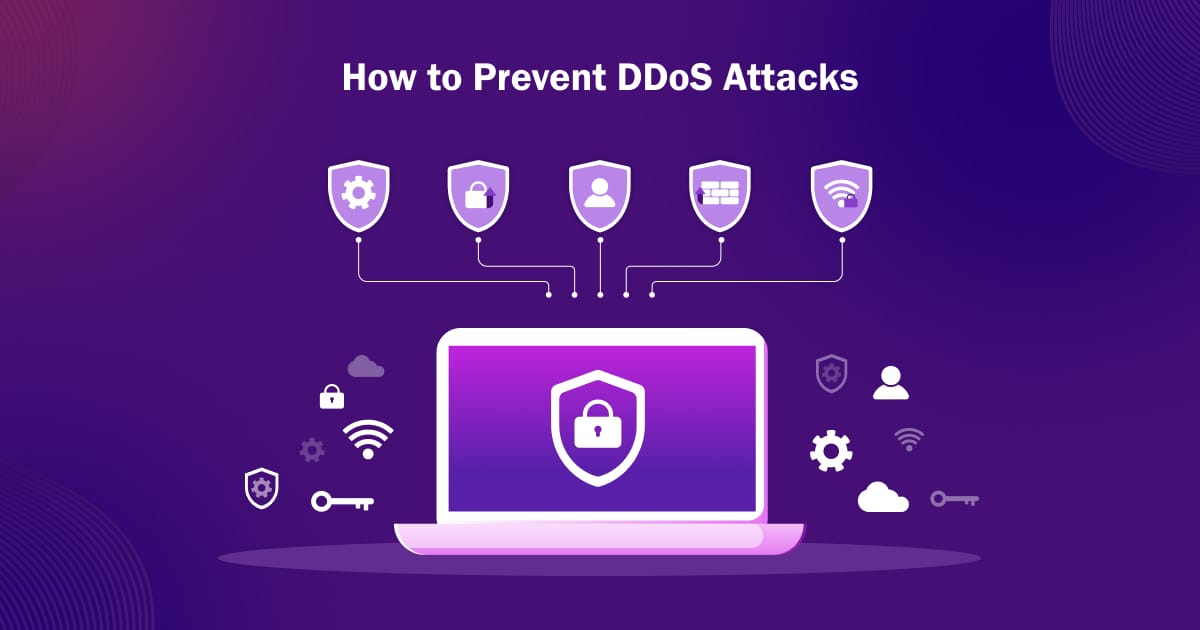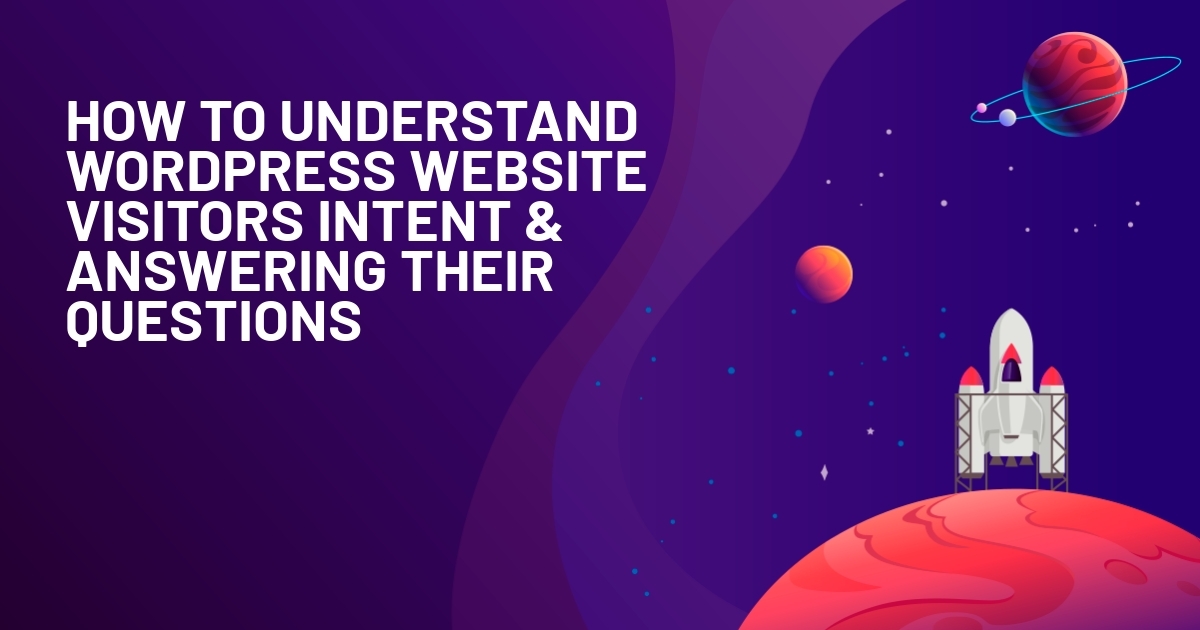WPLift is supported by its audience. When you purchase through links on our site, we may earn an affiliate commission.
DDoS Attacks Demystified: Get Expert Tips on DDoS Protection for Your WordPress Website

“The global cost of cybercrime is expected to surge in the next four years, rising from $9.22 trillion in 2024 to $13.82 trillion by 2028.” – Statista

“DDoS attacks spiked in 2023, with approximately 7.9 million DDoS attacks in the first half of 2023 for a 31% year-over-year gain.” – TechTarget
The above numbers clearly depict the increasing potential of cyber threats, especially Distributed Denial of Service (DDoS) attacks. Understanding DDoS attacks and ensuring protection against them becomes quite crucial.
These attacks can damage your website or online service by overloading the web traffic, rendering it inaccessible to legitimate users. It can lead to significant downtime, financial loss, and damage to your reputation.
Through this post, we will help you demystify DDoS attacks and provide expert tips on DDoS protection for your WordPress website from these disruptive cyber threats. From understanding how these attacks work to implementing robust DDoS mitigation and prevention measures, we’ll equip you with the knowledge to safeguard your online presence.
Let’s delve into the essentials of DDoS attack protection and ensure your WordPress website remains secure and resilient.
What are DDoS Attacks? – An Overview
“In a DDoS attack, the incoming traffic flooding the victim originates from many different sources.” – Wikipedia
DDoS attacks are malicious attempts to disrupt your WordPress website by flooding it with fake internet traffic. These attacks overload your server, making it inaccessible to the potential customers.
Such attacks come from multiple sources, often through a network of compromised computers called a botnet, making them hard to block.
Understanding these attacks is crucial for implementing effective DDoS protection measures. Focusing on DDoS attack prevention and mitigation strategies can significantly reduce the risk and impact of these threats.
Effective DDoS attack protection is essential for maintaining your online presence and ensuring your business continues to operate smoothly despite potential cyber threats.
Unveiling the Deceptive Nature of DDoS Attacks
Understanding how DDoS attacks work is key to defending against them. Gaining insights into what happens during the attack is also essential for DDoS prevention.
Here’s a breakdown of the process:
Building the Botnet
Attackers create a botnet, a network of compromised computers often called “zombies” or “bots.” These devices are infected with malware and controlled remotely without their owners’ knowledge.
Launching the Attack
When ready, the attacker commands all the bots in the botnet to send a massive number of requests to the target server, service, or network. This coordinated assault is designed to flood the system with more traffic than it can handle.
Overloading the System
The sudden surge in traffic from multiple sources consumes the server’s resources. This makes it incredibly difficult for the server to process actual requests, leading to significant slowdowns or a complete shutdown.
Causing Disruption
The primary goal of a DDoS attack is to disrupt normal operations, making the targeted service inaccessible to targeted users. It can lead to tremendous business loss.
Maintaining the Attack
Attackers may continue the assault for long, making it challenging for the target to recover quickly. They can also modify the attack patterns to make DDoS prevention difficult.
By flooding a system with excessive traffic, DDoS attacks exploit the limits of network resources and cause widespread disruption. Knowing how these attacks work helps you develop strategies for DDoS protection and ensure your systems remain secure and operational.
A Breakdown of Most Common DDoS Attacks
These attacks come in various forms, each with its own target flooding method. Understanding the different types can help you better defend against these disruptive threats. Let’s break down the main categories:
Application Layer Attacks
Application layer attacks target the top layer of the OSI (Open Systems Interconnection) model, which is where web pages, applications, and online services interact with users. The goal is to exhaust server resources by mimicking real traffic. These attacks are particularly dangerous because they can be hard to distinguish from normal traffic.
Protocol Attacks
Protocol attacks exploit weaknesses in the protocols used to manage network traffic.
For example, the Ping of Death involves sending malformed or oversized packets to a target, causing the system to crash or become unstable. These attacks can disrupt the infrastructure and exhaust the target’s resources.
Volume-based Attacks
Volume-based attacks, also known as bandwidth attacks, aim to consume the target’s bandwidth by flooding it with massive amounts of data.
These attacks include UDP floods, ICMP floods, and other spoofed-packet floods. The idea is to block the network, making it impossible for actual traffic to get through. These attacks are measured in bits per second (bps).
Multi-Vector Attacks
Multi-vector attacks combine elements of application layer, protocol, and volume-based attacks to create a more complex and difficult-to-mitigate threat. By attacking multiple vectors simultaneously, these assaults can break even the most robust defenses.
For instance, an attacker might use a SYN flood to tie up server connections while simultaneously launching an application layer attack to drain server resources. This multi-pronged approach makes it challenging to pinpoint and neutralize the threat.
Understanding these types of attacks can help you implement more effective security measures. Each type of attack has different vulnerabilities, so a comprehensive defense strategy that addresses all potential attacks is necessary.
7 Ways to Identify the DDoS Attacks
Identifying these attacks can be challenging, but knowing the signs can help you respond quickly and effectively with the right DDoS prevention. Here are some key indicators to watch for:
1. Slow Network Performance
One of the first signs of a DDoS attack is a noticeable slowdown in your network. Your wordPress websites may take longer to load, and users might experience lag.
This slowdown happens because the server is flooded by the sheer volume of malicious traffic, making it challenging to process potential requests.
2. Increase in Spam Emails
An unexpected surge in spam emails can be a red flag. While not a direct DDoS attack, spamming can be part of a larger strategy to overflow your network with unwanted traffic, distracting from the main attack on your servers.
3. Network Bottlenecks
Network bottlenecks occur when the influx of traffic is too much for the network to handle, causing delays and congestion.
This results in slow internet speeds, dropped connections, or an inability to access certain network resources. These bottlenecks are a common symptom of a volumetric DDoS attack.
4. Unavailability of a Particular Service
If a specific service, like your website or email server, suddenly becomes unavailable, it might be under attack. DDoS often strikes particular services, pushing them to the point of failure and making them inaccessible to users.
5. Unusual Traffic Patterns
Keep an eye out for traffic that doesn’t align with normal user behavior. This could include spikes in traffic at odd hours or an unusual amount of traffic from a single IP address or region. DDoS generates traffic that looks different from typical usage patterns.
6. Disproportionate Increase in Requests
A sudden, disproportionate increase in requests to a particular endpoint can signal a DDoS attack.
For example, if your login page or checkout process is suddenly flooded with requests, it might be an attempt to overload those specific services.
7. Unusual Device Behavior
Devices on your network acting strangely or showing signs of strain can also indicate a DDoS attack. This might include servers becoming unresponsive, high CPU usage without a clear cause, or network devices like routers and switches operating at capacity.
Recognizing these signs early can help you mitigate the impact of a DDoS attack. Continuous monitoring and understanding of your network’s normal behavior are essential in identifying and responding to these threats effectively.
6 DDoS Attack Prevention Tips from Experts
DDoS protection on your WordPress website involves implementing a strategic, multi-layered defense system. By integrating several protective measures, you can significantly enhance the security of your network and applications.
1. Establish a Protection Network and Applications
A robust and layered defense strategy is essential to shield your WordPress site from the ever-present threat of DDoS. Here are some key methods for fortifying your defenses:
Control Request Rate
Limit the number of requests a user can make to your server within a specific timeframe.
For example, if you manage an online store through your WordPress website, configure your server to allow only 50 requests per second per user to prevent your server from excessive requests.
- Install a Web Application Firewall (WAF)
Use a WAF to inspect incoming traffic and block malicious requests while allowing real ones through.
For instance, you can use Cloudflare’s WAF, which filters out harmful traffic based on known attack patterns. Regularly update your WAF rules to stay protected against emerging threats.
- Deploy Intrusion Detection and Prevention Systems (IDPS)
Add another layer of security with IDPS to monitor suspicious activity and automatically block harmful actions.
For example, Snort is a renowned open-source IDPS that excels in detecting and preventing attacks, providing robust DDoS protection for your network.
2. Setup Distributed and Scalable Infrastructure
Effective DDoS mitigation requires a strategic approach with robust infrastructure. Leveraging scalable and distributed systems can significantly enhance your defense against these threats.
- Anycast Network Routing
Imagine running a popular blog with a global readership. Anycast routing directs incoming traffic to multiple data centers around the world, dispersing the load. This means that if traffic increases, it is spread across different locations, reducing the strain on any single server.
- Load Balancers
Acting like traffic managers, load balancers distribute incoming traffic across multiple servers to prevent one server from becoming overflooded.
For instance, AWS Elastic Load Balancing can seamlessly distribute traffic across several Amazon EC2 instances, ensuring smooth operation.
- Content Delivery Networks (CDNs)
Considering the reputed CDNs like Akamai, you can cache copies of your website’s content on servers globally.
When traffic spikes, the CDN can handle the load by serving content from multiple locations, thus reducing the burden on your main server and increasing your site’s security from a DDoS attack.
3. Leverage DDoS Protection Services
Think of specialized DDoS protection services as personal bodyguards for your WordPress website. These services continuously monitor your traffic and use advanced techniques to filter out malicious activity.
For instance, solutions like AWS Shield are designed to detect and neutralize attacks in real time.
With their robust global infrastructures, DDoS protection service providers can withstand even the most significant attacks. It’s akin to having a team of security experts vigilantly safeguarding your website around the clock.
4. Monitor and Respond to Traffic Inconsistencies
- Monitor Your Traffic using Analytics Tools
Monitoring your traffic is essential for maintaining a secure WordPress website. Utilize real-time traffic analysis tools to identify any irregularities.
For example, your hosting provider may offer analytics that allows you to observe traffic patterns and detect anomalies.
- Implement Alerts
A sudden increase in traffic from a single source could be a DDoS attack. Implement rate-based alerts to notify you when traffic surpasses specific thresholds.
For instance, if your typical traffic is 100 requests per minute and suddenly spikes to 10,000, you’ll receive an alert.
Tools like Datadog can help you set up these alerts and monitor your traffic in real-time, ensuring you stay on top of potential threats.
5. Implement Robust Access Control and Regular Audits
Controlling access to your network is essential. Implement IP blocklisting to exclude malicious IP addresses and permit only trusted addresses.
For instance, you can configure your server to block traffic from specific IP addresses that have previously been flagged for malicious activity.
Regular security audits are crucial for identifying and addressing vulnerabilities. Tools like Nessus can help you scan your network for potential weaknesses, keeping your defenses current and robust.
By implementing these methods, you can significantly enhance your WordPress website’s DDoS protection, DDoS attack prevention, and DDoS mitigation against potential DDoS threats.
6. Infrastructure Migration
You need a robust hosting infrastructure integrating DDoS protection services to fend off DDoS attacks.
Hosting Architecture for Enhanced Security
Hosting architecture is designed to provide superior DDoS attack protection. Integrating with top-tier DDoS protection services, you can eliminate low-level sync flood attacks, as all web traffic is routed through these services.
This integration offers comprehensive DDoS protection, blocking unwanted TCP/UDP connections originating from specific IP addresses or networks at the network’s edge.
In addition, the Google Cloud Platform (GCP) firewall safeguards the network from potential attacks that directly target the infrastructure.
Automated Brute Force Attack Detection
Automated features constantly detect brute-force attacks on the WordPress website. Malicious actors are promptly blocked from the infrastructure, further strengthening security measures and ensuring effective DDoS mitigation.
With these robust security measures in place, we ensure that your WordPress site remains protected against the ever-evolving landscape of DDoS attacks.
How to Ensure DDoS Mitigation for Your WordPress Website?
A WordPress website client moved to new hosting services during a massive DDoS attack on their previous host. Shortly after going live, the client’s site was flooded with millions of requests, causing significant disruption.
Concerned by unusual traffic, they sought help from a leading security services provider. Experts confirmed the DDoS attack and implemented a custom WAF rule to challenge suspicious traffic. Despite minor mobile issues due to a DNS propagation problem, the website remained accessible.
As a result, the DDoS protection service mitigated the bulk of the attack and ensured the client’s site remained operational.
This incident highlights the importance of robust DDoS attack prevention, DDoS attack protection, and effective DDoS mitigation strategies to ensure uninterrupted service for WordPress websites under attack.
Key Takeaways
In an increasingly connected world, the threat of DDoS attacks is ever-present and evolving. Implementing effective DDoS protection is not just a technical necessity but a crucial aspect of maintaining your website’s reliability and reputation.
You can significantly enhance your defense against these malicious attacks by following the tips from security experts such as
- Utilizing Web Application Firewalls (WAF)
- Deploying Intrusion Detection and Prevention Systems (IDPS)
- Leveraging the power of distributed infrastructure
- Specialized DDoS protection services
- Regular monitoring
- Timely updates
- Proactive security measures
Protecting your WordPress website with these strategies ensures your data’s safety and your users’ trust and confidence.
Stay vigilant, stay informed, and let these expert tips guide you in creating a robust defense against DDoS attacks. Your website’s security is paramount, and with the right measures in place, you can ensure its resilience against any DDoS threats.







